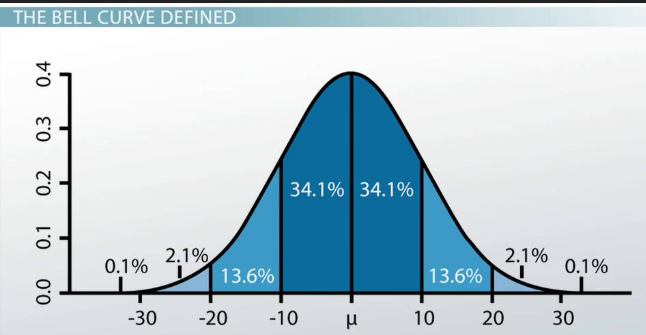AndrewAAGamer Solo Test
-
@AndrewAAGamer said in AndrewAAGamer Solo Test:
You are quite correct. 68.2% is the standard deviation of the Bell Curve.
What Bell Curve exactly? Please elaborate on this.
-
@AndrewAAGamer said in AndrewAAGamer Solo Test:
In my test I found that there were a few land combat battles that had a 90% plus hit against 1 unit that I did not take the hit unless there was carry over from a previous battle. I found this to be rather disturbing as quite a few times there was no hit. With a 90% hit chance I am thinking it is better to take the hit, only a 10% difference, rather than missing, a 90% difference. So ONLY if their is 1 targeted unit left and the rolling side gets 90% plus I am taking it as a hit every time going forward.
Optionally what you could do is round up once it is 70%, round down if it is 30% and keep track of the difference. For the cases between 40%-60%, you try to minimize the differential at all times.
-
@VictoryFirst said in AndrewAAGamer Solo Test:
@AndrewAAGamer said in AndrewAAGamer Solo Test:
You are quite correct. 68.2% is the standard deviation of the Bell Curve.
What Bell Curve exactly? Please elaborate on this.

-
@VictoryFirst said in AndrewAAGamer Solo Test:
Optionally what you could do is round up once it is 70%, round down if it is 30% and keep track of the difference. For the cases between 40%-60%, you try to minimize the differential at all times.
Now THAT is an interesting thought as anything over 70% or below 30% is an outlier.
So, only use the 31%-69% results as the carry over? That does mean lone attacking infantry are only going be counted if there is carry over to get them to a hit but that is not a bad thing.
-
Yeah so if you have 1.7 hits, that will become 2 hits with a difference of -0.3. Let’s say in another battle you have 1.6 hits. Since the differential is negative and you want to keep it as close to 0 as possible, you round down this time. Now the differential become +0.3.
-
@VictoryFirst said in AndrewAAGamer Solo Test:
Yeah so if you have 1.7 hits, that will become 2 hits with a difference of -0.3. Let’s say in another battle you have 1.6 hits. Since the differential is negative and you want to keep it as close to 0 as possible, you round down this time. Now the differential become +0.3.
What I was doing was taking any carry over, 2.4 = .4 and applying it to the next battle. Thus the next battle at 1.2 becomes 1.6 and carry over .6. Then the next battle is 1.8 and all .6 is applied for a hit and then start over at 0 again.
Are you saying track all differences as a running total? For example, 1.3 becomes 1 hit with .3, then 1.9 becomes 2 hits, with .2 and then 2.7 is is 3 hits with -.1?
-
Yes, I don’t think carrying overs are a good idea. When the battle calc says 2.4 hits, it should be 2.4 hits. However because you can only get a whole number of hits, the real number of hits are always off from the ideal number. You want to keep that difference to a minimum. So yes, I would suggest keeping track over an overall differential. Also - although it is just a feeling - I think you can’t just add leftovers from other battles without breaking the odds of the current battle.
-
@AndrewAAGamer said in AndrewAAGamer Solo Test:
Are you saying track all differences as a running total? For example, 1.3 becomes 1 hit with .3, then 1.9 becomes 2 hits, with .2 and then 2.7 is is 3 hits with -.1?
And to confirm, yes that is what I meant. It’s not perfect, although I think in the end it will work better than carrying over stuff. Although it deserves to be said that the “overall differential” method basically does the same thing as carrying over, it will negatively influence battles when the previous battle went positively and vice versa, however with this method you can more specifically make sure the overall difference stays as low as possible.
-
10 [dice 1d1000<=1]
11 [dice 1d1000<=1]
17 [dice 1d1000<=1] -
1d1000<=1: 708; Hits: 0
1d1000<=1: 894; Hits: 0
1d1000<=1: 195; Hits: 0 -
Utah [dice 1d1000<=1]
Gold [dice 1d1000<=1]
Juno [dice 1d1000<=1]
Sword [dice 1d1000<=1] -
1d1000<=1: 215; Hits: 0
1d1000<=1: 35; Hits: 0
1d1000<=1: 450; Hits: 0
1d1000<=1: 510; Hits: 0 -
10 [dice 1d1000<=1]
11 [dice 1d1000<=1]
14 [dice 1d1000<=1]
15 [dice 1d1000<=1]
16 [dice 1d1000<=1]
17 [dice 1d1000<=1] -
1d1000<=1: 461; Hits: 0
1d1000<=1: 532; Hits: 0
1d1000<=1: 206; Hits: 0
1d1000<=1: 972; Hits: 0
1d1000<=1: 585; Hits: 0
1d1000<=1: 618; Hits: 0 -
10 [dice 1d1000<=1]
11 [dice 1d1000<=1]
14 [dice 1d1000<=1]
15 [dice 1d1000<=1]
16 [dice 1d1000<=1]
17 [dice 1d1000<=1] -
1d1000<=1: 121; Hits: 0
1d1000<=1: 57; Hits: 0
1d1000<=1: 28; Hits: 0
1d1000<=1: 297; Hits: 0
1d1000<=1: 856; Hits: 0
1d1000<=1: 616; Hits: 0 -
14 [dice 1d1000<=1]
15 [dice 1d1000<=1] -
1d1000<=1: 408; Hits: 0
1d1000<=1: 403; Hits: 0 -
32 [dice 1d1000<=1]
34 [dice 1d1000<=1] -
1d1000<=1: 2; Hits: 0
1d1000<=1: 25; Hits: 0






